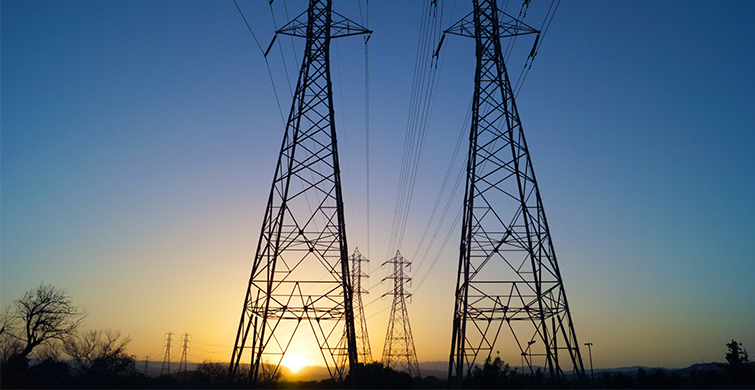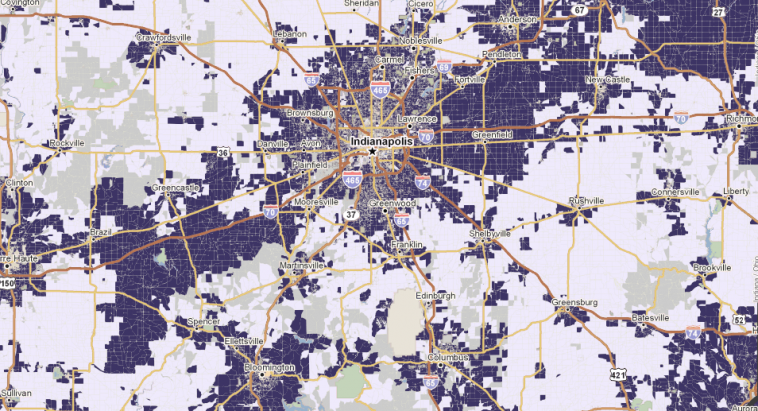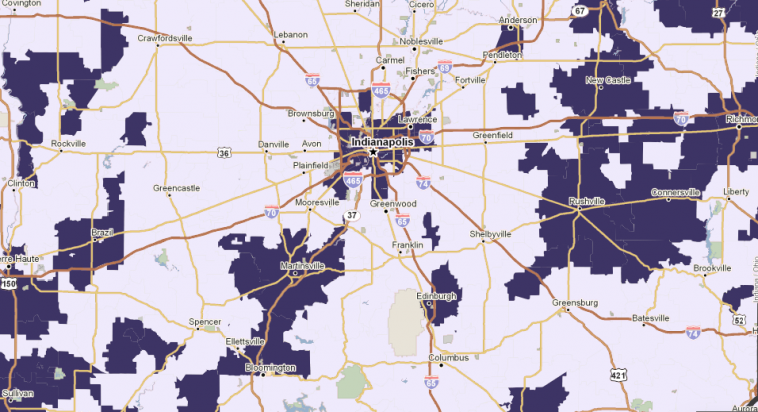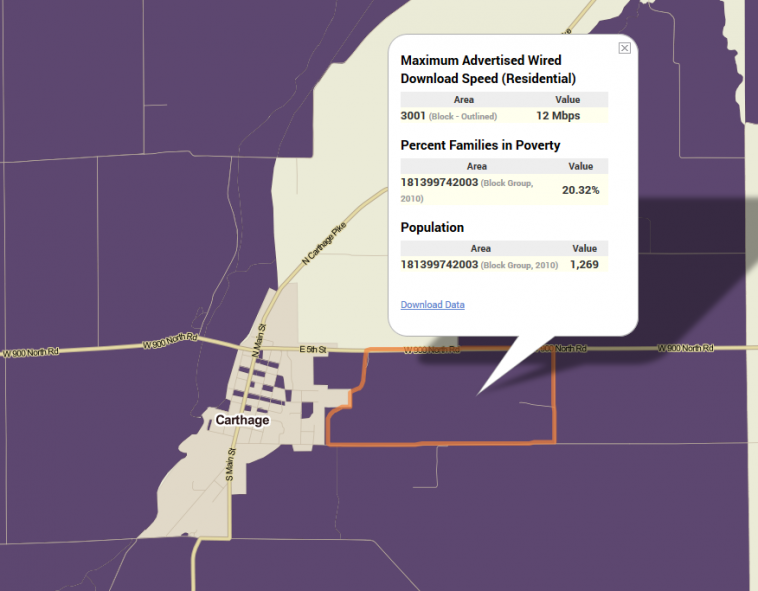Disconnected: America’s Digital Divide

Data
Broadband Wired Download Speed (Residential)
Source
Find on PolicyMap
- Economy
- Broadband Internet Access
- Speed and Technology
Explaining the Digital Divide
Reliable internet connectivity is a necessity for everything from running a small business to pursuing advanced educational training and online degrees to staying connected with family and friends across the country. And yet in a world that is becoming more connected every day, one in ten Americans lacks access to basic broadband service – defined by speeds of 25 megabits per second (Mbps) download/3Mbps upload – according to a 2016 Federal Communications Commission (FCC) Broadband Progress Report.
While the FCC has been working to address a Congressional mandate of universal deployment of advanced communications to all Americans in a reasonable and timely fashion, there are significant disparities in broadband availability. This disparity is especially pronounced in the lack of reliable connectivity in rural and tribal areas of the country. According to the FCC report, while 4% of the urban population lacks access to basic broadband service, 39% of the rural population and 41% of the population on tribal lands lack access to the same service. The digital divide also overwhelmingly affects populations that are of lower income and lower educational attainment according to research on the topic by the Pew Research Center.
Visualizing the Digital Divide in PolicyMap
Earlier this year, we wrote about the detailed broadband data available in PolicyMap. And given some of the recent discussion on this topic, we wanted to take a look at our broadband data alongside other indicators like poverty to identify those communities that may be most vulnerable to being left behind by this digital divide.
The urban/rural disparity in access to basic broadband is glaring when you look at a state like Indiana. In the map below, areas shaded in dark purple have access to broadband with download speeds of 25 Mbps or greater – the threshold for basic broadband. The light purple areas lack access to basic broadband service. While the Indianapolis metro area is adequately served, that quickly dissolves as you move into rural areas to the northwest, southeast and southwest with the exception of some small towns or rural centers.

Now let’s look at an indicator of economic distress – percent of families in poverty. In the map below, the areas shaded dark purple are areas where the percent of families in poverty exceeds 12% (the state and national average is 11%). While the City of Indianapolis meets these criteria, we can also see that some of these economically distressed areas fill in the areas in the map above that lack access to basic broadband service (light purple shading). This is particularly evident in the rural communities east of Indianapolis as well as some of the areas in the southwest corner of the map.

We can use the 3-Layer Maps tool in PolicyMap to take a closer look at this and to identify specific areas where both of these criteria are met – lack of access to basic broadband and above average family poverty. The map below is zoomed in on the rural areas east of Indianapolis around a small town named Carthage. The areas shaded purple meet both criteria as well as a third indicator of total population greater than 100 so we’re only showing populated places.

The selected area has a broadband download speed of 12 Mbps, less than the basic speed of 25Mbps, and the percent of families in poverty is estimated at 20.32%, well above the state and national average.
Without access to advanced telecommunications, these areas which are already struggling with high poverty rates will continue to be left behind in an increasingly digital world. These are the kind of places that could benefit from targeted investment in broadband technology and programs to keep broadband service affordable.
In the News
Early signals out of the new administration have been mixed as to whether they will work to further address America’s digital divide. The newly appointed FCC Chairman, Ajit Pai, made national headlines earlier this month when he reversed a prior decision that allowed nine telecommunications companies to participate in a federal program known as Lifeline that provides subsidized Internet access to low income households. At the same time, the administration’s proposed $1 trillion infrastructure program offers the potential for massive investment in desperately needed advanced telecommunications infrastructure in rural and tribal areas. A recent article from the Brookings Institution offered up the concept of a rural broadband acceleration fund as part of the anticipated infrastructure program.